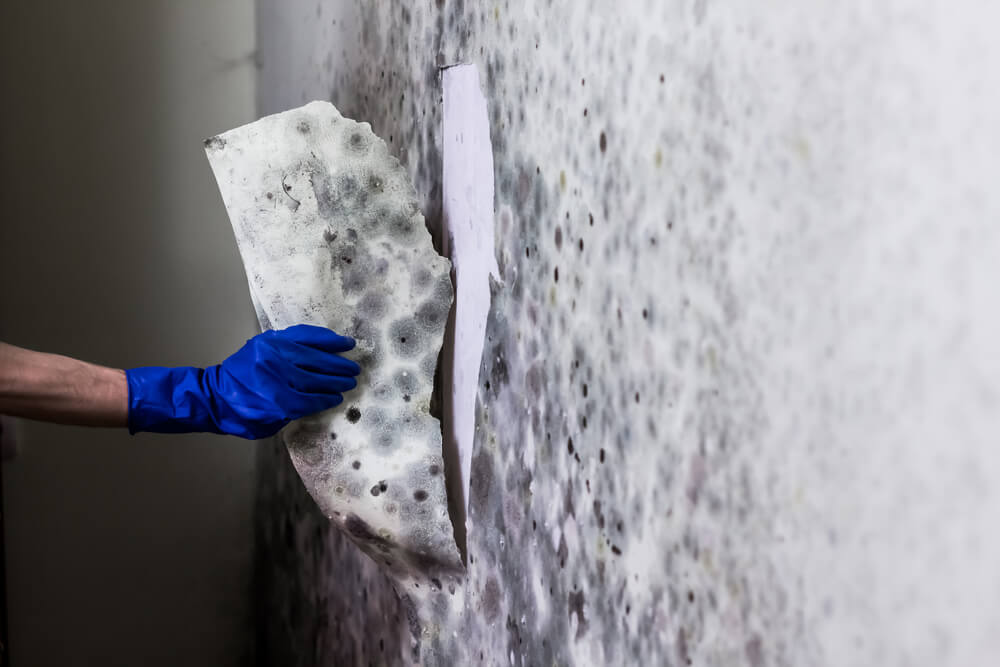Testing Air Quality After Mold Remediation
Testing Air Quality After Mold Remediation
Blog Article
Effective Post Mold And Mildew Removal Solutions for Your Home
Mold and mildew growth in homes can be a relentless issue, commonly calling for a systematic strategy for efficient post-remediation options. From recognizing the variables that add to mold growth to carrying out proper cleaning techniques and dampness control measures, the procedure can be detailed yet vital for keeping a healthy living environment. Additionally, exploring all-natural remediation services and developing a routine for continuous maintenance are vital elements of a comprehensive mold remediation method. As house owners aim to deal with mold issues, finding one of the most effective remedies comes to be critical for the health of their families.
Comprehending Mold And Mildew Development Factors
The main aspect adding to mold growth is dampness. Mold spores require dampness to germinate and thrive, making moist or damp settings very susceptible to mold problems.

In addition, airflow and light exposure can impact mold development. Areas that do not have appropriate air flow and all-natural light are more vulnerable to mold and mildew advancement. By addressing these elements comprehensively, individuals can effectively reduce mold growth and protect their living environments.
Correct Mold Cleansing Strategies
Making use of effective cleaning methods is necessary in avoiding the recurrence and addressing of mold contamination in indoor atmospheres. When taking care of mold, it is important to prioritize security by using safety equipment such as goggles, handwear covers, and masks. The very first step in appropriate mold cleansing is to consist of the damaged area to stop the spread of spores to unpolluted locations. This can be accomplished by sealing off the area and using air scrubbers or unfavorable air machines to keep air top quality.

Applying Moisture Control Procedures
To efficiently prevent mold and mildew growth and contamination in indoor atmospheres, executing wetness control actions is critical. Moisture is the main element that gas mold development, making it essential to manage moisture levels within the home. One reliable step is to use dehumidifiers to preserve indoor humidity degrees listed below 60%. Additionally, making certain appropriate ventilation in areas susceptible to moisture buildup, such as shower rooms and kitchens, can my review here help in reducing the threat of mold and mildew growth. Routinely examining and repairing any leakages in pipes, roofing systems, or windows is likewise crucial in protecting against excess dampness buildup. have a peek here Utilizing exhaust followers while cooking or bathing, and enabling air circulation by maintaining furniture somewhat far from wall surfaces can assist in dampness control. Using moisture-resistant materials in high-humidity areas, such as mold-resistant drywall and paints, can be helpful. By faithfully carrying out these wetness control measures, homeowners can efficiently lower the probability of mold and mildew recontamination and maintain a healthy and balanced interior setting.
Making Use Of Natural Removal Solutions
After successfully executing dampness control actions to avoid mold and mildew development in indoor atmospheres, property owners can currently explore the effectiveness of all-natural removal options in maintaining a healthy living area. Natural remediation solutions make use of ecologically friendly approaches to fight mold and mold, making them a prominent choice for those looking for non-toxic choices. By incorporating these all-natural remediation services right click here now into their cleaning regimens, home owners can efficiently fight mold and mildew development while promoting a much healthier interior atmosphere for themselves and their families.

Keeping a Mold-Free Environment
In order to avoid mold and mildew reappearance and guarantee a consistently mold-free setting, it is important for home owners to implement positive upkeep practices. Routinely inspecting locations susceptible to mold and mildew growth, such as washrooms, attic rooms, basements, and kitchens, is vital. Addressing any leaks, water damages, or excess wetness without delay can significantly reduce the risk of mold advancement. what to do after mold remediation. Appropriate air flow in areas with high humidity degrees is also key to avoid mold and mildew development. Utilizing dehumidifiers or exhaust fans can aid preserve optimal wetness levels and inhibit mold and mildew spores from thriving.
Additionally, keeping tidiness in the home is vital for mold prevention. Routinely cleansing and dusting surface areas, rugs, and upholstery can help remove mold and mildew spores before they have an opportunity to work out and multiply. Utilizing mold-resistant products for construction materials and home furnishings can additionally aid in producing a mold-free setting. Maintaining indoor plants in check and ensuring correct drain in outdoor landscape design can lessen dampness build-up, minimizing the likelihood of mold and mildew problems. By complying with these proactive maintenance techniques, homeowners can properly promote a mold-free home.
Verdict
To conclude, it is important to attend to mold development elements, use correct cleaning strategies, execute moisture control procedures, utilize all-natural remediation remedies, and preserve a mold-free environment in order to effectively manage article mold and mildew remediation in your house - Post Mold Remediation Report. By adhering to these techniques, you can protect against mold and mildew from repeating and make certain a healthy living atmosphere for you and your family
The main variable contributing to mold growth is dampness. Mold spores need dampness to prosper and sprout, making humid or moist settings highly vulnerable to mold and mildew problems.To effectively stop mold growth and contamination in indoor settings, applying moisture control steps is vital. Furthermore, making certain proper ventilation in areas prone to moisture accumulation, such as shower rooms and cooking areas, can aid minimize the threat of mold and mildew development.After efficiently applying dampness control procedures to prevent mold and mildew growth in indoor settings, house owners can now discover the effectiveness of all-natural removal solutions in keeping a healthy living area.
Report this page